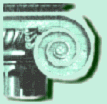Storing electronic material at the University of Helsinki
There are three ways to ensure the preservation of electronic
material: copying, converting or emulating. In this article I shall describe
these methods, evaluate them from the point of view of storing electronic
material at the University of Helsinki, and finally present some recommendations
to help improve the preservation of this kind of material. This article will
discuss the problem mainly from a technical point of view. However, there is
also an organisational and a political aspect to it. For
further details on the subject, please, contact:
Juha
Hakala, Director of Information Technology
Helsinki University Library
Email: juha.hakala@helsinki.fi
The role of metadata in the long term preservation of electronic materials
The electronic documents are dependent on the technical
environment that enable their use. An electronic document consists of bits but
it is not enough to simply store the bits, we also need information on how these
bits are to be interpreted. For this reason metadata, a description of the
document is needed in the long term preservation of electronic documents. The
idea is to document the details essential for the use of the material and thus
improve its preservation.
Recommended
reading in English: Preservation Metadata for Digital Objects: A Review of the State of the Art.
OCLC/RLG White Paper January 31, 2001. http://www.oclc.org/digitalpreservation/presmeta_wp.pdf
and: PADI-Forum. Preserving access to Digital Information (Subject Gateway) http://www-prod.nla.gov.au/padi/ For further
details on the subject, please, contact:
Jani Stenvall, Project Secretary
Helsinki University Library
Email: jani.stenvall@helsinki.fi
Networked European Deposit Library
The
E.U. NEDLIB project terminated in February
2001. The aim of the project was to prepare both a reference model and
practical solutions for building archives of electronic documents. This
article discusses the main results of this project, which are:
- Developing
a general reference model for digital archives
- Providing
recommendations of the methods and standards suitable for archiving
digital materials
- Developing
software applications for digital archives
- Building
a demonstration system for testing these tools in practice
The
article discusses each of these points in detail with an evaluation of the MMB
and NEDLIB Harvester tools developed by the Deutsche
Bibliothek and the NEDLIB project respectively.
Documentation
on the results is available in English at: http://www.kb.nl/coop/nedlib/
(section Results)
For further details on the
subject, please, contact:
Juha
Hakala, Director of Information Technology
Helsinki University Library
Email: juha.hakala@helsinki.fi
The FinELIb user interface - single access to multiple
web resources
The main task of the National
Electronic Library is to acquire domestic and international web resources to
support education and research and to improve the access to these materials.
In the beginning of the year 2001 the researchers and students can access some
3500 international journals, 90 reference databases, legal documents,
dictionaries, reference books and also material freely available via the World
Wide Web. The acquisition of these materials, however, is not enough, but we
also need to provide an interface that makes the use of the materials easy and
convenient. This was prompted by feedback from the users.
The
article discusses the project that has taken place since 1999 and has now come
out with a demo version for the new user interface.
For further details on the subject, please,
contact:
Juha
Hakala, Director of Information Technology
Helsinki University Library
Email: juha.hakala@helsinki.fi
and
Kristiina Hormia-Poutanen, Head of National Electronic Library Services
Helsinki University Library
Email: kristiina.hormia@helsinki.fi
The new phase of the ELEKTRA project
The ELEKTRA database, which consists of full text articles
in Finnish scientific journals, was launched already in the spring of last year
for use in the universities throughout the country. In the beginning of this
year a licence agreement was signed which enabled the use of the database also
in Polytechnics and Public Libraries.
In 2000 the project was renamed ELEKTRA PRO with the
Federation of Finnish Learned Societies
having
the main responsibility instead of the Helsinki University Library. The
third partner in the project is KOPIOSTO, the joint copyright organization for
authors and publishers in Finland.
The articles in the ELEKTRA
database were included in the article reference database ARTO in February
2001, thus enabling direct access to the full text for just a licence
fee surcharge.
For further details on the subject, please,
contact:
Eeva-Liisa Aalto, Publishing Manager
Federation of Finnish Learned Societies
Email: eeva-liisa.aalto@tsv.fi
Tietolinja 1/2001
|

